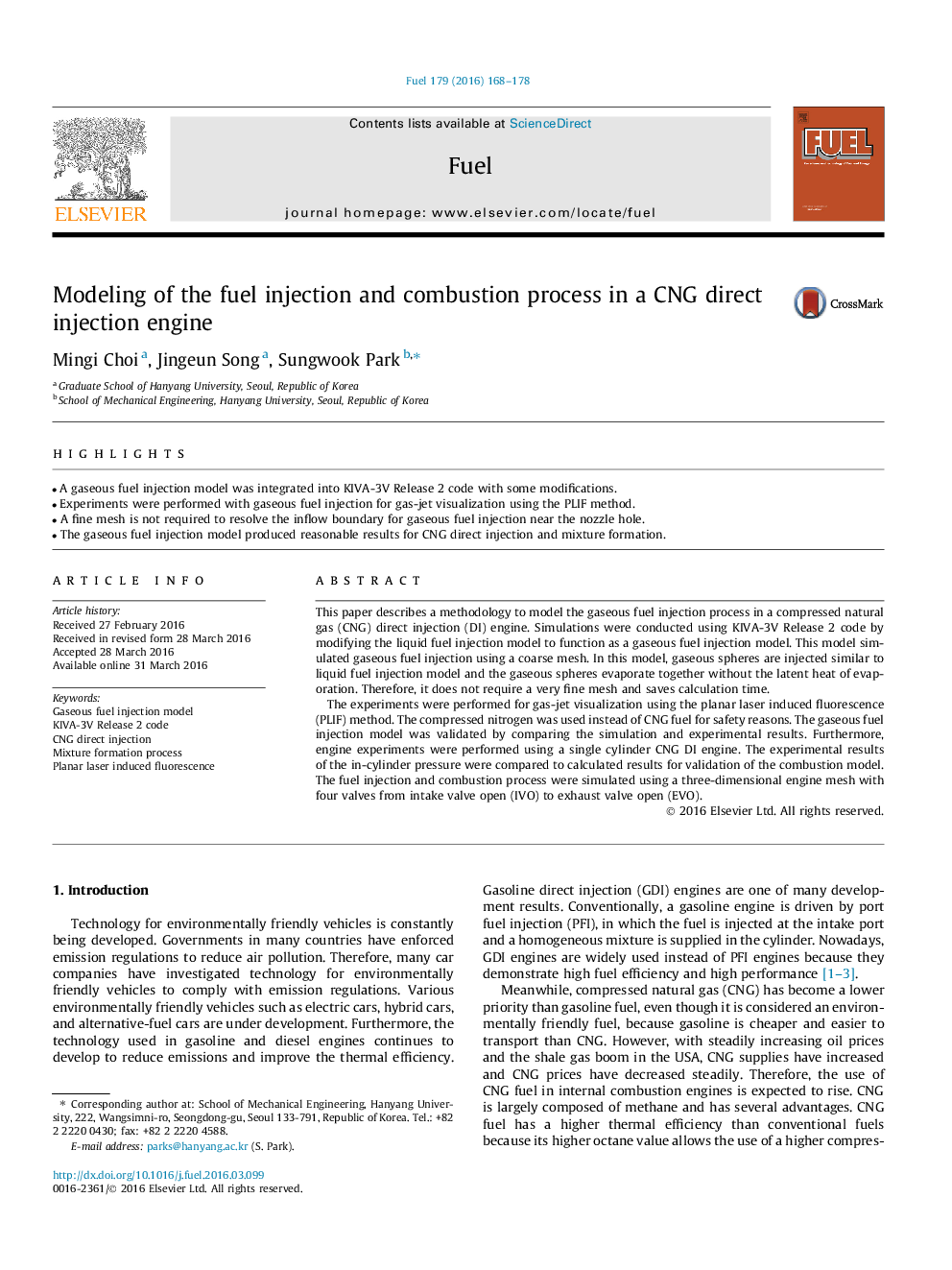| Article ID | Journal | Published Year | Pages | File Type |
|---|---|---|---|---|
| 205085 | Fuel | 2016 | 11 Pages |
•A gaseous fuel injection model was integrated into KIVA-3V Release 2 code with some modifications.•Experiments were performed with gaseous fuel injection for gas-jet visualization using the PLIF method.•A fine mesh is not required to resolve the inflow boundary for gaseous fuel injection near the nozzle hole.•The gaseous fuel injection model produced reasonable results for CNG direct injection and mixture formation.
This paper describes a methodology to model the gaseous fuel injection process in a compressed natural gas (CNG) direct injection (DI) engine. Simulations were conducted using KIVA-3V Release 2 code by modifying the liquid fuel injection model to function as a gaseous fuel injection model. This model simulated gaseous fuel injection using a coarse mesh. In this model, gaseous spheres are injected similar to liquid fuel injection model and the gaseous spheres evaporate together without the latent heat of evaporation. Therefore, it does not require a very fine mesh and saves calculation time.The experiments were performed for gas-jet visualization using the planar laser induced fluorescence (PLIF) method. The compressed nitrogen was used instead of CNG fuel for safety reasons. The gaseous fuel injection model was validated by comparing the simulation and experimental results. Furthermore, engine experiments were performed using a single cylinder CNG DI engine. The experimental results of the in-cylinder pressure were compared to calculated results for validation of the combustion model. The fuel injection and combustion process were simulated using a three-dimensional engine mesh with four valves from intake valve open (IVO) to exhaust valve open (EVO).
